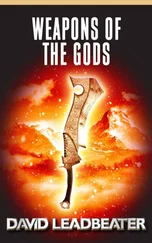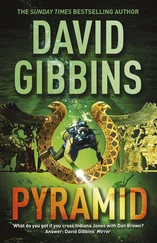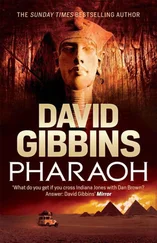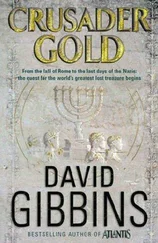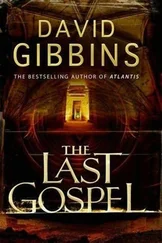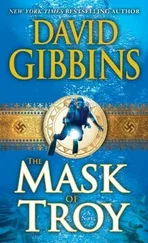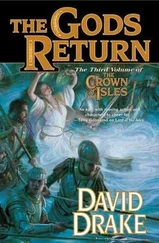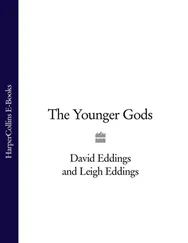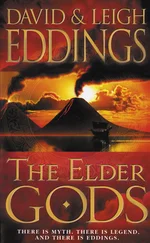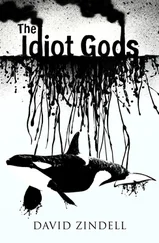David Gibbins - The Gods of Atlantis
Здесь есть возможность читать онлайн «David Gibbins - The Gods of Atlantis» весь текст электронной книги совершенно бесплатно (целиком полную версию без сокращений). В некоторых случаях можно слушать аудио, скачать через торрент в формате fb2 и присутствует краткое содержание. Жанр: Прочие приключения, на английском языке. Описание произведения, (предисловие) а так же отзывы посетителей доступны на портале библиотеки ЛибКат.
- Название:The Gods of Atlantis
- Автор:
- Жанр:
- Год:неизвестен
- ISBN:нет данных
- Рейтинг книги:3 / 5. Голосов: 1
-
Избранное:Добавить в избранное
- Отзывы:
-
Ваша оценка:
- 60
- 1
- 2
- 3
- 4
- 5
The Gods of Atlantis: краткое содержание, описание и аннотация
Предлагаем к чтению аннотацию, описание, краткое содержание или предисловие (зависит от того, что написал сам автор книги «The Gods of Atlantis»). Если вы не нашли необходимую информацию о книге — напишите в комментариях, мы постараемся отыскать её.
The Gods of Atlantis — читать онлайн бесплатно полную книгу (весь текст) целиком
Ниже представлен текст книги, разбитый по страницам. Система сохранения места последней прочитанной страницы, позволяет с удобством читать онлайн бесплатно книгу «The Gods of Atlantis», без необходимости каждый раз заново искать на чём Вы остановились. Поставьте закладку, и сможете в любой момент перейти на страницу, на которой закончили чтение.
Интервал:
Закладка:
Atlantis revisited
My novel Atlantis was based on the premise that the sunken city, uniquely known from the fifth century BC Greek philosopher Plato’s dialogues Timaeus and Critias, was not Plato’s fictional creation but was truly derived – as he claims – from an account by the early sixth century BC Greek traveller Solon, who had heard it from an Egyptian priest in the temple at Sais in the Nile delta. The Egyptian priests had an unbroken tradition of knowledge extending far back into prehistory, and my novel began with the fictional discovery of a papyrus containing Solon’s original account of his visit to the temple. However, instead of basing the story in the Bronze Age, on the second-millennium BC eruption of the Aegean volcano of Thera and its effect on Minoan civilization – as do many archaeologists who take Plato’s story at face value – my Atlantis dated thousands of years earlier, a distant memory of a devastating flood and a lost city at the dawn of civilization, not in the Aegean, but in the Black Sea to the north-east. This placed Atlantis in the Neolithic – the ‘New Stone Age’ – at the time when agriculture was first developed, a period dating from soon after the end of the Ice Age about twelve thousand years ago until the widespread adoption of copper technology from about the fifth millennium BC.
My inspiration derived from remarkable evidence published during the 1990s that the Black Sea may have been cut off during the last Ice Age from the Aegean by a land bridge across the Bosporus Strait, and that the Black Sea remained at its Ice Age level – a hundred metres or more below the present shoreline – until the global sea level rise caused the waters of the Aegean to breach the land bridge and flood the Black Sea basin. During the Ice Age, the glaciers themselves had not reached as far south as the Black Sea, but the great melt had a global effect on coastal settlement. The possibility that the Black Sea flood did not occur until the sixth millennium BC, more than three millennia after the beginning of the Neolithic, meant that the flood could have inundated early farming communities that may now lie underwater off the northern shore of Turkey. Evidence for the fecundity of this region suggests that it should be included within the ‘fertile crescent’ where agriculture first developed, stretching from present-day Israel up through Anatolian Turkey and down into the Zagros mountains of Iran.
The idea that there could have been a city with monumental structures was inspired by real-life evidence from the early Neolithic: Jericho, in present-day Palestine, had city walls and a tower as early as the ninth millennium BC, and at Catalhoyuk in Anatolia, the excavations in the 1960s revealed a substantial town of the eighth millennium BC. Catalhoyuk even produced a famous wall painting that may show a town on the slopes of a double-peaked volcano, an image that appears in The Gods of Atlantis. I was also inspired by a theory that associated the spread of farming with the spread of Indo-European language, which had been sourced by many scholars to the Black Sea region about the seventh millennium BC. I could therefore imagine groups of early farmers fleeing the flood, some going overland to Mesopotamia and the Levant and Egypt, others by boat into the Aegean and further west – taking their animals with them, as we know happened in the Neolithic and may be remembered in the Old Testament account of Noah – and spreading agriculture, a common language and new technology far across Asia and Europe, and perhaps beyond.
The Neolithic revolution
The phrase ‘Neolithic revolution’ was coined in the 1950s by the prehistorian Gordon Childe to describe the dramatic changes that took place in the Near East after the Ice Age. As recently as 1980, when I first studied archaeology as an undergraduate, the Neolithic was still being approached in his terms, as a time when the invention of agriculture led to the first towns. This approach – in which economic rationale was the driving force behind change – and the rapidity of the ‘revolution’ seemed to be borne out by the evidence of Jericho and Catalhoyuk, towns that dated very soon after the first evidence for agriculture. But this picture has been turned on its head by new discoveries in eastern Turkey. It is less clear now that hunter-gatherers would have seen the advantages of agriculture in a region where foraging may have provided an easier livelihood; other factors were at play. The most extraordinary new finds are religious sites – temples, for want of a better word – that may have preceded the first towns and agriculture, yet whose construction required a level of labour organization that would have made these other developments – the construction of towns and monuments – possible. New religious ideas may therefore have been a driving force behind the rise of civilization. This stunning idea makes this period one of the most exciting in current archaeology. What has emerged is not only a new kind of Neolithic revolution, but also a revolution in the way we approach the past.
The site above all that has led to this revolution in ideas is in southern Turkey, at Gobekli Tepe, where excavations began in the 1990s and are still ongoing. In my novel Atlantis, Jack sees a Stonehenge-like structure in Atlantis that hints at the religious ideas that fleeing priests may have taken with them far to the west. At Gobekli Tepe, the archaeological reality behind this image is spectacularly revealed in an oval structure containing a circle of monolithic stones, carved in a way that suggests they may have been anthropomorphic. Extraordinarily, this ‘temple’ may date to 9500 BC, older even than Jericho. Another site in Turkey containing monolithic pillars has been discovered at Nevali Cori, and a third temple is at Cayonu. The finds from these sites discussed in this novel are all actual discoveries. The Cayonu site is now submerged by the waters of the Ataturk dam, suggestive of sites similar to these that may have been submerged along the Black Sea coast by another flood more than seven thousand years ago.
The birth of the gods
These ‘temple’ sites of the early Neolithic may represent a new form of religion, and the Neolithic revolution may above all have been a revolution in belief systems and the part they played in the rise of civilization. In order to understand what this new religion might have replaced, archaeologists have looked back to the rock paintings that first appear in caves in Europe about thirty-five thousand years ago. These caves, the basis for the fictional rock paintings in my novel, may have been portals into a spirit world, with spirit animals such as the bull – the aurochs – being used by shamans or seers as a way of transporting themselves into the supernatural, to a place where they could contact the dead. The famous female figurines of this period, with their exaggerated breasts and buttocks, may have been fertility symbols – good-luck charms – rather than ‘gods’; the much later mother goddesses of the Bronze Age may hark back to a clay figurine of this type found at Catalhoyuk, but if she was a ‘god’, it may have been as a transmogrification from the fertility symbol rather than evidence for a Palaeolithic – Old Stone Age – goddess cult. Good luck with fertility, good luck with the hunt – represented perhaps by the spirit animals of the caves – and a way of dealing with death may have been the building blocks of the first coherent belief system, one which did not involve gods or acts of worship as we would understand them today.
Some of the clearest evidence for this older belief system may be where it survived into the early Neolithic in private domestic contexts, visible for the first time in the earliest houses. Renewed excavations at Catalhoyuk since the 1980s have focused attention on the symbolism of art and artefacts within houses, including the bull’s-horn ‘bucrania’ that have become an iconic image of the site. Houses may have taken on some of the significance of caves in the Palaeolithic, with bulls ‘coming through’ the walls in the same way that animals appear in cave paintings, suggesting that man-made walls had taken over from rock as a portal into the spirit world.
Читать дальшеИнтервал:
Закладка:
Похожие книги на «The Gods of Atlantis»
Представляем Вашему вниманию похожие книги на «The Gods of Atlantis» списком для выбора. Мы отобрали схожую по названию и смыслу литературу в надежде предоставить читателям больше вариантов отыскать новые, интересные, ещё непрочитанные произведения.
Обсуждение, отзывы о книге «The Gods of Atlantis» и просто собственные мнения читателей. Оставьте ваши комментарии, напишите, что Вы думаете о произведении, его смысле или главных героях. Укажите что конкретно понравилось, а что нет, и почему Вы так считаете.

